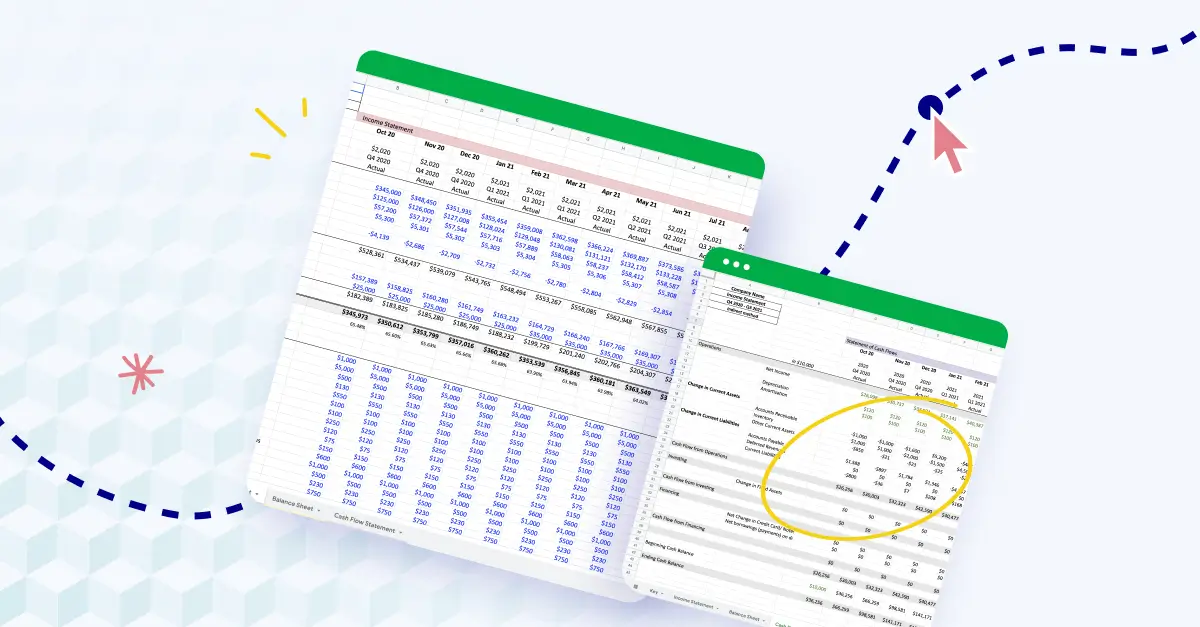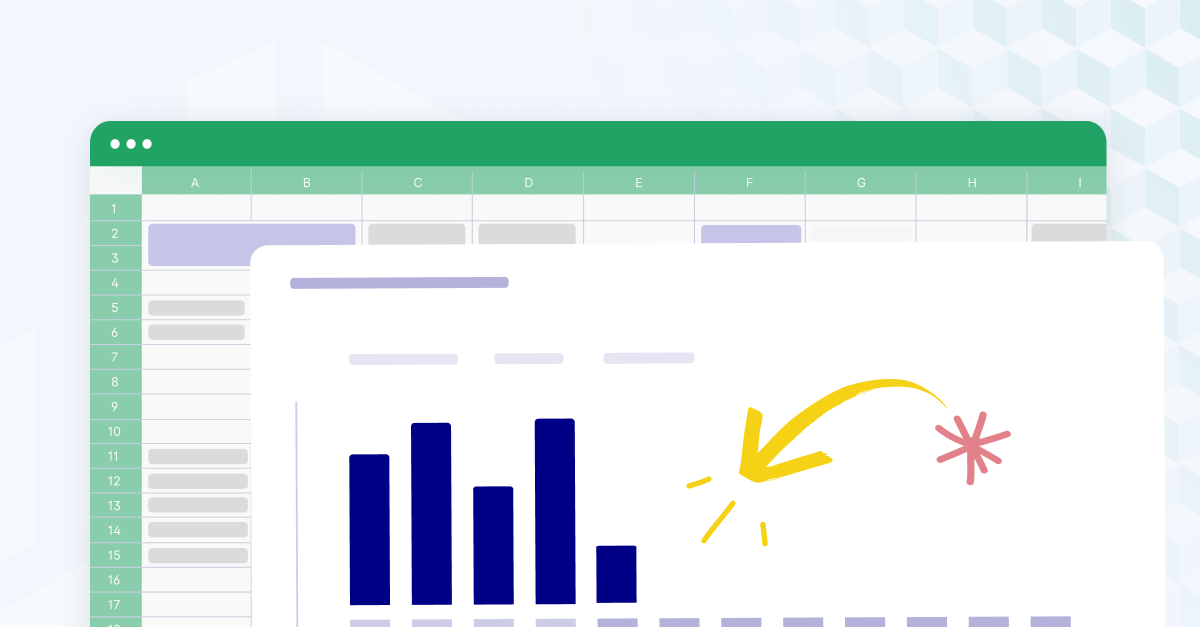What is zero-based budgeting?
Zero-based budgeting (ZBB) is a financial management approach that promotes a proactive, intentional, and strategic approach to managing finances. Whether for an individual or an organization, ZBB can lead to better financial outcomes and a clearer understanding of financial priorities.
Zero-based budget definition
Zero-based budgeting (ZBB) is a budgeting method that starts from scratch for each budgeting period. In other words, when creating a budget, planners begin at $0 and build from there. The previous budget isn't even considered.
Unlike other budgeting methods, this is the most granular approach—it asks how each dollar is spent to maximize cost-effectiveness.
In recent years, this method has become increasingly popular. This is mostly thanks to the combination of digitization (which makes it easier to collect and analyze data) and economic uncertainty, causing companies to tighten their belts and want each expense to be justified.
Core characteristics of zero-based budgeting
- Starts from zero
- Thorough expense justification
- Activity-based budgeting
- No automatic rollovers
- Strategic alignment
- Continuous review and optimization
- Involvement of all levels
- Flexible and adaptive
To understand how a zero-based budget works, it's best to view it in comparison to something much more familiar to finance teams: traditional budgeting.
Traditional budgeting vs. zero-based budgeting
In traditional business budgeting, each new budget builds on the previous one.
We think of increases or decreases—the IT department is growing and needs a blanket, 2% increase, say. The individual costs that this increase will cover—and how they're helping the company reach its long and short-term strategic goals—aren't explained.
(This type of adjustment is known as incremental budgeting, by the way.)
Here are some key takeaways:
Zero-based budgeting requires justified expenses
Each expense in a zero-based budget is quantified in a dollar amount and tied to specific objectives. As mentioned, you wouldn't even consider the previous budget.
With traditional budgeting, expenses typically grow month by month or year by year. With zero-based budgeting, however, the new budget could be larger or smaller than the previous one.
All that matters is that each expense is justified.
In this sense, zero-based budgeting is similar to activity-based budgeting, where every item in the budget is tied to some business function.
Zero-based budgeting considers all expenses
Where traditional budgeting only looks at proposed, new expenses, zero-based budgeting requires the importance of old and recurring expenses to be explained.
Expenses that are no longer productive won't fly under the radar simply because they were a part of the previous budget.
Departments often do all they can to avoid budget cuts, even if the allocation doesn't make sense. Zero-based budgeting helps reduce budget bloat by targeting unproductive expenses, whether large or small.
Zero-based budgeting requires managerial involvement
By necessity, zero-based budgeting requires close involvement from department managers, who are required to justify expenses.
This makes it a bottom-up approach to budgeting, as insights on lower levels are communicated to the top.
Since department heads and employees understand their needs better, bottom-up budgeting can be more effective at growing departments in a streamlined fashion and ensuring expenses contribute to the company's strategic objectives.

Optimize monthly income with zero-based budgeting
Zero-based budgeting doesn't just start with zero—it ends with zero, too.
If that sounds confusing, all we mean is that the goal of zero-based budgeting is to ensure every dollar is spent within the budgeting period—that, when everything is tallied, income minus expenses equals $0.
For this reason, zero-based budgeting is also known as zero-sum budgeting.
Since this approach is so granular, it's best used from month to month.
Especially in business, each dollar must be allocated towards a specific goal, whether investments in financial instruments, equipment, hiring, or paying off short- and long-term debt. This is what's permitted by zero-based budgeting—every bit of monthly income is used.
Businesses should also build up a rainy day or emergency fund for insulation during a crisis. Since every dollar is accounted for, it's also necessary when building a zero-based budget—otherwise, a crisis could completely destroy your granular plan, as you won't have any extra money to respond.
How do you build a zero-based budget?
A five-step zero-based budgeting process
Not sure how to actually make a zero-based budget?
No problem.
Here's a simple give-step zero-based budgeting process for you to follow.
1. Determine inflows and outflows
Your first step is to record one month's revenue and expenses for the specific period you wish to evaluate.
- Scrutinize your bank statements, and add up each category.
- Divide these numbers by decision units—departments that drive decisions like marketing or production.
- Track inflows and outflows over a few months to get an accurate picture.
Once you've done that, it's time for the next step.
2. Subtract expenses from revenue
Once you have your total monthly income and expenses, subtract expenses from income.
As mentioned, the ultimate goal of a zero-based budget is to have the result be zero.
However, you'll probably find this isn't the case when you first run the numbers.
That's ok, as it helps highlight where you need to improve.
3. Evaluate the data
By analyzing the revenue and expense data, you can determine what keeps you from hitting that zero target.
You might discover that one department is spending too much while another is spending too little.
4. Create a plan
Now that you know which areas of your business aren't spending every dollar—or even dipping into the red—you can create a plan. Here's where department heads must justify every expense.
Challenge them with your own reading of the data—they may surprise you by being able to explain why a certain cost is necessary. Put these into your emergency fund or pay off debt if you have extra money.
Once you've determined which adjustments must be made, you're ready to execute the plan.
5. Execute and repeat the process
Put the plan into action.
If your result for the next period is still not zero, use that information for the next period—you'll create a new zero-based budget and repeat the process.
Pros of a zero-based budget
There's a lot advantages of zero-based budgeting.
It's flexible, fair, and easy to justify.
And that makes it an effective approach to get started with.
Here are some of the things we like about zero-based budgeting.
Flexibility
Perhaps the greatest benefit of zero-based budgeting is its responsiveness.
Where traditional budgeting is rigid, zero-based budgeting is flexible.
The ability to quickly pivot expenses can be critical for companies that need to react quickly to market changes—given the uncertain times, that tends to be all of them.
Cost management
Since it looks at all expenses—and not just new ones—zero-based budgeting is one of the best approaches to cost management.
Using a traditional budgeting method may completely overlook unnecessary legacy costs. These legacy costs may have made sense when they were adopted, but are now just draining funds that could be used elsewhere.
For example, you may find buying a component from a third party was the most cost-effective option five years ago. Now, though, the cost of that item has gone up while your in-house capability has increased—you'll save money by manufacturing that component yourself.
If using traditional budgeting, this actionable advice would be hidden.
Clarity
When every dollar is accounted for, and you can directly tie those expenses to specific projects, you're able to see where your money's going in a way that traditional budgeting doesn't allow for.
The goal is to determine the ROI of each dollar spent.
This aids in financial planning by helping you prioritize payments. It illustrates how much money you have for things like debt repayment or building an emergency fund.
If you're chasing specific financial ratios or metrics (like the SaaS magic number), a zero-based budget helps you get laser-focused on how to best allocate your spending to improve those signals.
Close alignment with strategic objectives
Zero-based budgeting is a bottom-up approach, which means goals determined on a departmental basis must be aligned with the company's overall strategic objectives.
It comes down to department heads to justify this—how each individual expense fits into those strategic goals.
In this way, it helps ensure every dollar goes to the company's growth when creating a new zero-based budget.
Unbiased evaluation of proposals
Zero-based budgeting can be a fairer process.
The traditional method involves building on previous budgets, meaning items from those budgets get higher priority.
With zero-based budgeting, each proposed expense is looked at as a new item—if an employee or department head comes up with a more efficient process, it has just as much chance as the old one at becoming part of the new budget.
This helps raise morale by involving more people.
Cons of a zero-based budget
Unfortunately, a zero-baed budget isn't a silver bullet or a growth hack for quick wins.
Like all budgeting methods, it comes with some real downsides and limitations.
As the FP&A team, it's your responsibility to correct these biases in your own budgeting process.
Resource intensive
Zero-based budgeting is an involved process.
This provides all its primary benefits but is in itself a disadvantage. Creating a zero-based budget can take a lot of time and money when each line item needs its own justification.
For this reason, many businesses that employ zero-based budgeting use it in a rolling fashion—you could also look only at specific departments you suspect aren't cost-efficient, rather than evaluating the entire company.
Keep in mind, though, that planning software has made zero-based budgeting much easier than it used to be.
Doesn't always consider the long-term
If budgeting periods are short, perspective may be lost on long-term trends. Think research and development—ZBB can't tie R&D to quick revenue generation or short-term goals.
However, R&D initiatives obviously have a good chance of being profitable over time.
By focusing so intensely on short-term periods like month-to-month, you could be jeopardizing the company's long-term position.
Only considers profit centers
Similarly, since zero-based budgeting focuses on revenue, it can overlook departments that provide more intangible benefits like HR or accounting.
In recent years, cost centers like HR have shifted from departments that simply keep a company from losing money to departments that actively drive company policy through deep, data-rich insights.
With an approach that only focuses on revenue, these departments won't receive the attention they deserve and could be underfunded.
Therefore, relying only on zero-based budgeting can have a poor effect on the growth of the company, especially as a data-backed approach becomes even more important.
Zero-based budget examples
There are various reasons why you might want to start a budgeting cycle from scratch. Here are a few examples of where it would be an appropriate strategy:
-
Developing new products. Setting a budget for something that hasn't been developed yet is tough. When using ZBB for R&D it's important to consider the market demand and the strategy importance of each new product.
-
Travel Expenses. This is one of the most common-sense uses for ZBB especially where virtual alternatives can often take place instead of in-person meetings. With Zero-based budgeting, finance teams can evaluate whether each business trip needs to take place. Do you really need that travel fund just sitting there or could those extra funds be used for something else?
-
Facility Management. Similarly, office rent and utilities are major expenses and it's worth assessing whether or not a physical office still makes sense for your company. With ZBB, you can consider downsizing, relocating, going fully remote or look to negotiate rent and other costs.
-
Cost Reduction Initiative. A company embarks on a cost reduction initiative using zero-based budgeting across various departments. All expenses, from office supplies to travel costs, are re-evaluated and justified, leading to significant savings and a more efficient allocation of resources.
Overall, ZBB's real-world applications extend to any setting where a methodical and justified approach to budgeting is essential for achieving financial goals and operational efficiency.
Should your business use zero-based budgeting?
Zero-based budgeting does not have to be your whole strategy. It depends on your financial situation.
If you have a smaller business, it may be impractical—you might not have enough staff to dedicate to gathering and assessing data.
Why is the zero-based budget the most effective type of budget?
While calling zero-based budgeting (ZBB) the "most effective" type of budget depends on the organizational context and goals, ZBB is often considered highly effective for several reasons. ZBB's requirement to justify every expense from scratch promotes a thorough evaluation of costs, leading to increased cost transparency and efficiency.
By focusing on strategic alignment and value creation, ZBB ensures that resources are allocated where they can have the most significant impact. The flexibility of ZBB allows organizations to adapt quickly to changes, fostering a culture of continuous improvement.
Collaboration from department heads helps justify each expense in terms of how they help meet the company's high-level goals, and this involvement helps create a culture of cooperation.
Overall, the zero-based budgeting process is excellent at helping businesses prioritize their expenses—when the goal is to spend every dollar, you need to know where those dollars are best spent.
On the other hand, this budgeting style could miss some important long-term trends or the significance of input coming from cost centers like HR and accounting.
Naturally, though, when you're aware of some of the pitfalls of this budgeting method, you can take the necessary steps to avoid them and reap only the benefits.
Conclusion
Now you know all about zero-based budgeting.
What it is. How to do it. And what to look out for.
Ready to revolutionize your zero-based budgeting process? Dive into the world of Cube. With Cube, seamlessly integrate your real-time and historical data into Excel, making the initial assessment in zero-based budgeting a breeze.
Effortlessly export this data to Google Sheets, ensuring your department leaders and managers are always in the loop.
Cube also enforces data integrity, so you never have to worry about sharing inaccurate data. Every figure you share will be spot-on, mirroring your GL to perfection.
Intrigued?
Click the image below to request a free demo and dive deeper into what Cube can offer.



.png)









